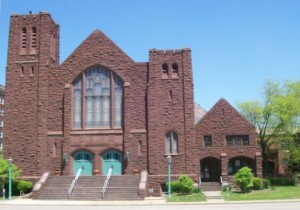Hot Chocolate at High Mass November 6, 2010
Author: Beach Combing | in : Modern , trackback Beachcombing was doing some research, trying to catch up with a student’s reading on the origins of chocolate and came across this gem. It is the story of a bishop, Bernardino de Salazar, who was poisoned because he tried to stop the women in his congregation from taking chocolate drinks during high mass. Our narrator is the English Dominican, Thomas Gage (obit 1656) who traveled to the New World in the first quarter of the seventeenth century.
Beachcombing was doing some research, trying to catch up with a student’s reading on the origins of chocolate and came across this gem. It is the story of a bishop, Bernardino de Salazar, who was poisoned because he tried to stop the women in his congregation from taking chocolate drinks during high mass. Our narrator is the English Dominican, Thomas Gage (obit 1656) who traveled to the New World in the first quarter of the seventeenth century.
The Bishop [of Chiapa] was (as all the rest are there) somewhat covetous; but otherwise a man of temperate life and conversation, very zealous to reforme whatsoever abuses committed in the Church, which cost him his life before I departed from Chiapa to Guatemala. The woman of that City it seems pretend [i.e. claim] much weaknesse and squeamishnesse of stomack, which they say is so great, that they are not able to continue in the Church while a Masse is briefly hudled over, much lesse while a solemn high Masse (as they call it) is sung, and a Sermon preached, unlesse they drink a cup of hot Chocolatte, and eat a bit of sweet-meats to strengthen their stomacke. For this purpose it was much used by them to make their maids bring to them to the Church in the middle of Masse or Sermon a cup of Chocolatte, which could not be done to all, or most of them without a great confusion and interrupting both Masse and Sermon. The Bishop perceiving this abuse and having given faire warning for the omitting of it, but all without amendment, thought fit to fixe in writing upon the Churches dores an excommunication against all such as should presume at the time of service to eat or drinke within the Church.
The woman left the cathedral in disgust and Gage alleges that the episcopus was then poisoned by one of his servants on the command of a spurned lady. Certainly, Bernardino died in 1626 just three years after he had been ordained. Gage was in Chiapa at this time.
Beachcombing’s first thought on reading this was just how glad he is to not have lived in the seventeenth century. The Middle Ages did bigotry with style, whereas modernity manages tolerance tolerably well. The early moderns though fall between two stools – even the likeable Gage converted to Catholicism and back again to Anglicanism and then worked with that monster Oliver Cromwell towards the end of his life.
But Beachcombing must also confess to enjoying the thought of Bernardino’s expression when, at his first mass, a series of creole servants walk in with steaming cups of hot cocoa just as the blessing is made: veni sanctificator…
Beachcombing does not know if any academic has made the obvious connection between hot cocoa at mass and the claims sometimes made that chocolate was used by the Aztecs in blood rituals. Bernardino Sahagún (obit 1590) wrote that a beverage made of cacao and bloody water was given to sacrificial victims in their last dance.
Of course, an ‘obvious’ connection does not mean a correct connection, still it makes you think…
Beachcombing has also found reference to an article by Martha Few, ‘Chocolate, Sex and Disorderly Women in Late-Seventeenth Century Guatemala’, Ethnohistory 52 (2005) 673-687. Perhaps chocolate will be a fruitful field of research for bizarrists? Beachcombing, in any case, can’t wait to get his hands on those fifteen promising pages. He will also take this opportunity to recommend a new site he recently stumbled on for Mesoamerica…
Any other chocolate stories? Beachcombing will unwrap them – drbeachcombing AT yahoo DOT com


